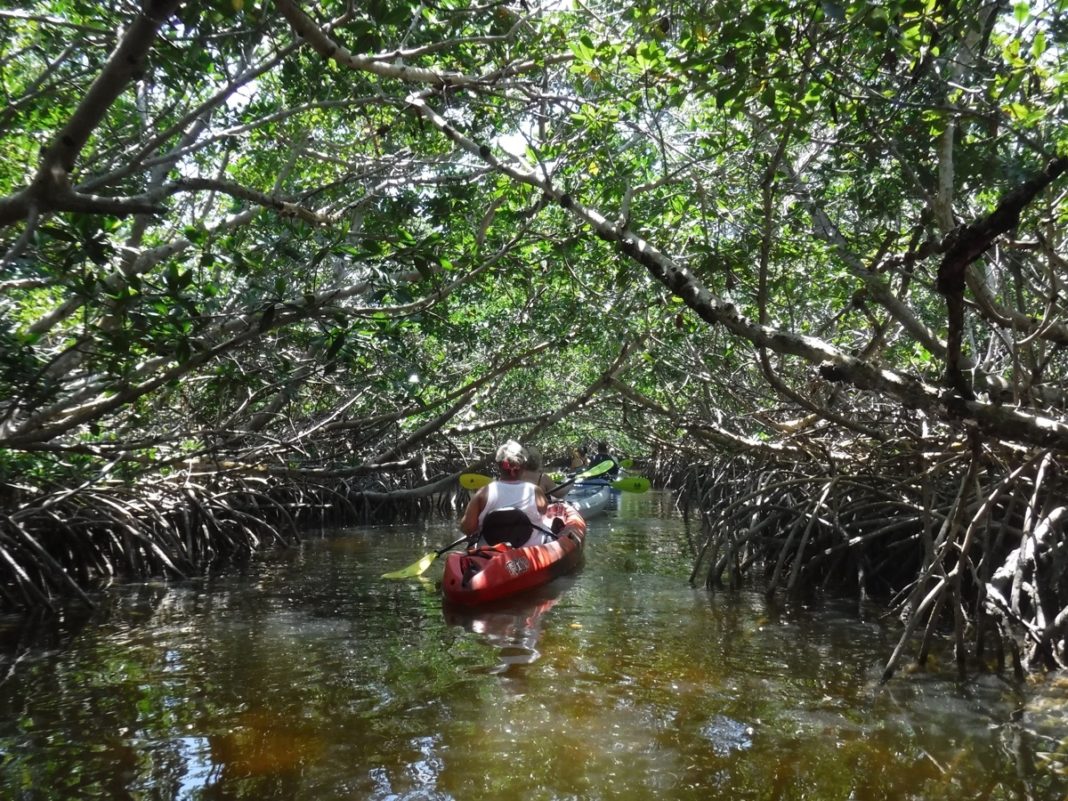I like an open water paddle as much as the next person. But I love, love, love exploring mangrove trails. It’s sort of the Keys version of hiking.
Mangrove trails are literally paths through stands or swamps of mangrove trees. Usually, the greenery meets overhead, forming a little tunnel. Sometimes there’s not enough room to swing a paddle, and I traverse it by pulling myself along by the stilt (exposed) roots of the tree. That close focus reveals so much — the tiny crabs that skitter away from my reaching hand, the pocket nurseries of baby fish, the flutter of bird wings above. Often, the water is crystal clear — perfectly filtered by a functioning and healthy mangrove system.
Exploring a mangrove trail can be a meditation; the silence seeping into my saltwater soul. It can be educational, too, with the right tour guide who is versed in the ecosystem.
In Marathon, Boot Key is an uninhabited island bisected by miles of mangrove trails. I’ve been back there for up to four hours at a time, spending 80% of it in a shaded mangrove tunnel, occasionally paddling across a little bay, but never without a guide. It’s too big and twisty; I would definitely get lost. Another favorite trail is the one at Curry Hammock State Park on Grassy Key. From the little launch beach, kayakers “turn left,” or towards the highway, to find the trailhead.
I have my own secret mangrove trail, too. Maybe four people know about it. I always make the newbies take the lead through that particular mangrove trail … because spiders. Somedays I want that meditative mangrove tunnel experience, other times I want to trick a friend into catching spiderwebs with her face because it’s hilarious.
As far as the physicality of tackling a mangrove trail, well, it’s not hard. In the trail, conditions are protected — from the sun and wind. At a high tide, or in a particularly “short” mangrove tunnel, you have to lie down to clear the overhead branches. Paddleboards require a little more agility, maybe, but better clearance. Sometimes there’s a current running through the trail and other times it could be clogged with seaweed. That’s nature for ya.
Whether I’m setting off on an openwater paddle or heading toward a mangrove trail, I have one firm safety rule: always paddle into the wind on the way “out.” That way the ride back to the starting point, with the wind at my back, requires little effort. There’s no sense in making the second half of a workout the hardest; best to do it while fresh.
Happy trails.

















